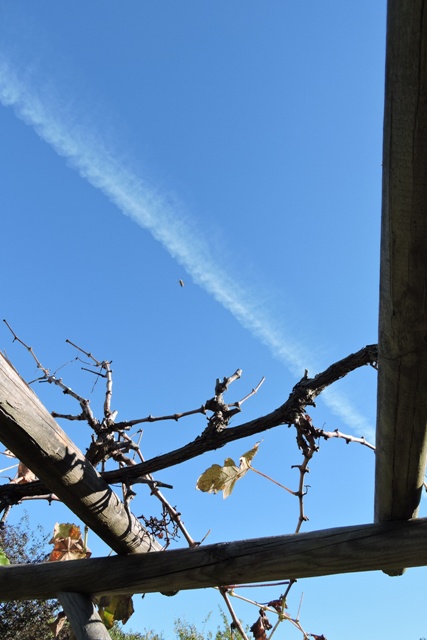Electrics and water DO mix
This week: It takes Military planning; Electrics and water DO mix; Climate change and COP26; The Medlar; Much ado about photographs; A possible solution; Looking back;

I’ve had another of those “single issue” weeks here this week.
From Monday, all the way through to Friday, I have been working in the Cottage, getting ready for when Cvjetko returns for the next stage of the restoration work.
I have taken breathers in the orchards, for long enough to enjoy coffee in the warm winter sunshine. Only to notice how quickly the sun is disappearing now behind the hill to the south.
It’s not surprising really, because we are just 5 weeks away from the winter solstice.
There have also been several trips to town for shopping, the Vets and the Post Office too, all of which take time and break up a work routine.
It takes Military planning
I have Pongo curled up on my knee at the moment. It is rather like wearing a hot water bottle, but he seems to have forgiven me for this week’s indignities…

We have all been to the Vets this week for our annual Flu jabs and worming tablets. Taking the two adults and four adolescent felines is rather like planning a military operation. It all needs to happen, but there is a sequence required for it to be a success.
It’s all rather strange, but the more food the growing adolescent’s eat, the bigger they grow and the more food they then eat….
No longer can I get two kittens in a carry-case (or on my knee). They now demand their own accommodation.
Senior cat Callie has never been a problem and after breakfast she went into the largest transport case without any issues. Similarly Argen and Tigger. I chose them to go first because I thought they might have been the most difficult.

Off we all went with barely a murmur. The new vet Želiana, quickly and expertly gave them the cocktail of vaccine, followed by a worming tablet. The longest job was updating the computer afterwards.
An hour later we were all back home, tucking into a treat. I should say that I ate the smoked salmon though…
Two days later it was Gizmo’s turn. I had already put Bljsak into a carrier when Gizmo came in for breakfast. He took one look and fled. It took until lunch time to catch hold of him, only when he was really hungry, to get him in the box. Sleepy Pongo was no problem.
All three cried all the way to the surgery. Once there, Pongo cowered in the back of the carrier and refused to move. Bljsak came out to explore, saw the syringe and tried to retreat, but it was Gizmo who really surprised me.
He burst out of his carry case as soon as I opened the latch and made for the door, then the window. I picked him up and cuddled him while he had the vaccination, but we didn’t attempt the worming tablet.
I came home with a Profender sachet instead. They are now all OK.
I should get my Flu vaccination soon. I’m not looking forward to the worming tablet or having my temperature taken though…..
Electrics and water DO mix
Everything is a matter of planning. I knew I was going to renovate the Cottage, so laid in the underground power supply cables and central heating pipes when I had the courtyard dug up.
My plan for where everything was going was also ready, so this week I have been preparing the walls.
I needed a circular stone saw to cut the various channels in the old stonework.

These saws make a terrible amount of fine dust, so I thought I would be clever and use a reciprocating fan to move dust laden air outside. Wrong!
I had the fan on and it made no difference at all. Not a jot! All that happened was it created another job – of cleaning all the dust which had accumulated on the fan.
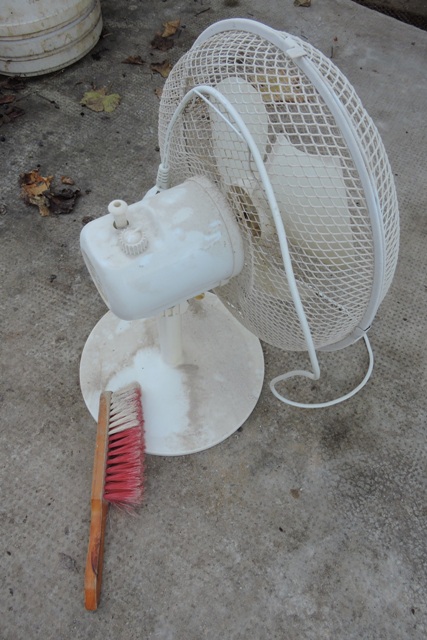
With the walls cut, I then used an electric chisel to remove the fill, so I could position the various pieces of conduit and cable.
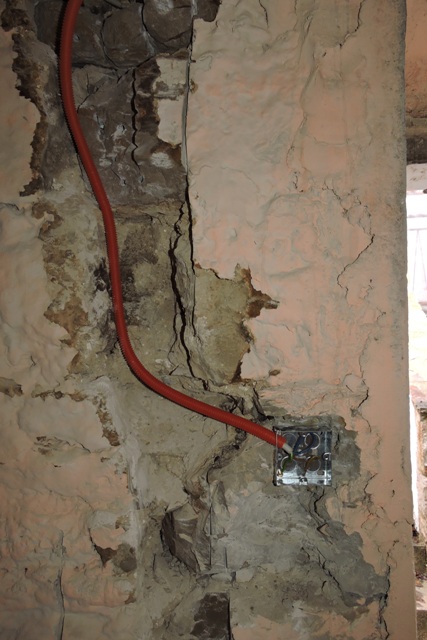
The insulated water pipes needed a much wider and deeper space than the electrical conduit.
With those jobs done, I turned to the walls and removed the remainder of the old lime plaster. This is another really messy task.
Another job was to cut a channel in the floor for the central heating pipes too.
I have a lot of fittings in stock, so I laid out what I needed for the water pipes, in a schematic but without the pipe lengths between the fittings.
This was to help visualise the network and to make sure I had everything. I needed to buy just one connector.

There is a water supply for the washing machine, refridgerator and the sink, as well as a connection which feeds the garden tap outside.
I’m just not sure how thick the render on the walls will be. So I don’t dig the holes too deep for the fittings, I’m now waiting for Cvjetko to call and tell me.
By the end of the week I have an acceptable amount of progress to show for my efforts…
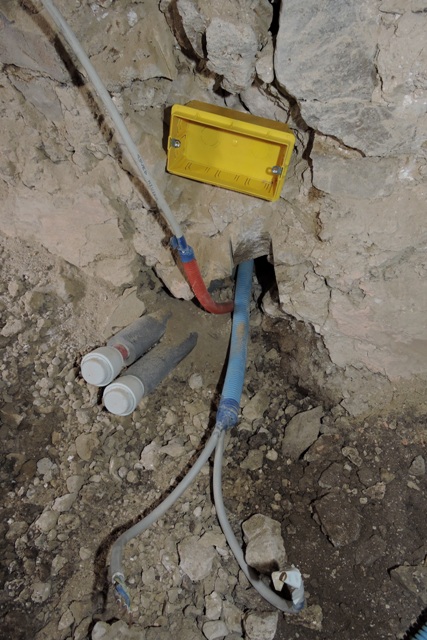
Climate change and COP26
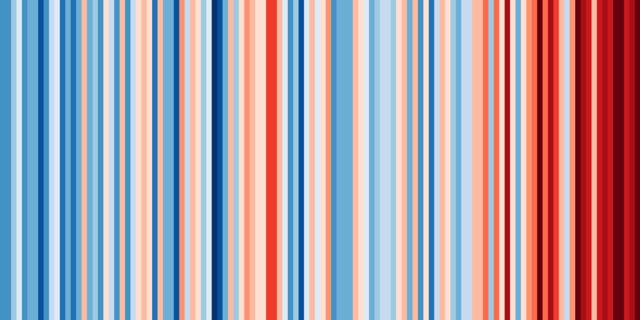
I listen to the BBC news via internet radio and there has been wall to wall coverage this week of the COP26 climate change negotiations which have been going on in Glasgow.
There has been almost nothing on the local news here. It is almost as though the COP26 conference has not been happening, or perhaps Croatia is just not taking part there.
Croatian Prime Minister Andrej Plenković said on 1st November that Climate change must become the main political topic, a day later he said that Croatia will compensate for the impact that tourism has in the country by planting millions of trees. Since then there has been silence…
It is strange because local people are talking all the time about the changes to the climate, but there is no discussion about what we as individuals need to do to reduce our harmful emissions.
One of my near neighbours has used her bicycle to get to Stari Grad every day for work this summer. However it is only for going down. The route is five kilometres long and is downhill all the way. On my bike it takes me about six minutes.
Returning home is different matter. It is uphill all the way, with the last 100 meters the steepest, from sea level to the 100 meter contour which runs through the Top Orchard.
Her husband brings her and the bike home in their VW Golf, but every little helps.
As I write this on Saturday afternoon, the COP26 is running over and there is still no final agreement. There seems to be a lot about where money to compensate small island states will come from, but that is all.
Here where more than a third of the country’s population live in towns and cities where the sea is less than a metre away vertically, there is no discussion about the tidal flooding which already takes place.
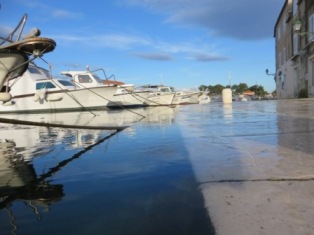
While for some more important towns and cities, like Stari Grad (pictured above) will probably get funding for flood defences, others will not.
I worry about what will happen to places like Jelsa, Vrboska and Prapatna.
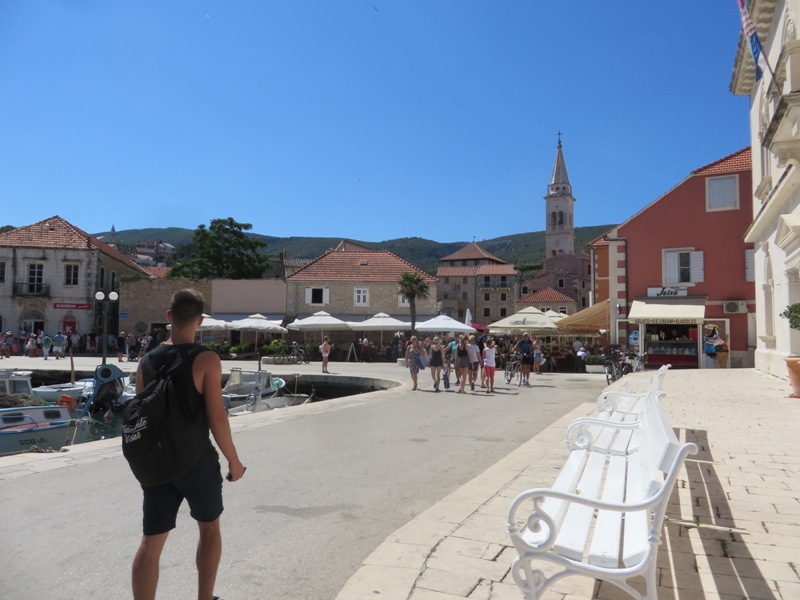
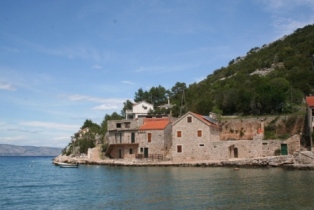
The Medlar
You will be hard pushed to find any Medlars on your supermarket shelves.
The Medlar, Mespilus germanica, is a winter fruit and is related to the Quince and Apple. It cannot be eaten straight from the tree, instead it has to be “Bletted“, that is allowed to go soft and to start to ferment.
They are usually picked in winter after a few cold nights and are then brought inside and allowed to begin to Blet. The skin turns darker and begins to wrinkle and the fruit will be soft to the touch.
When I pick them off my tree, they are as hard as Iron.
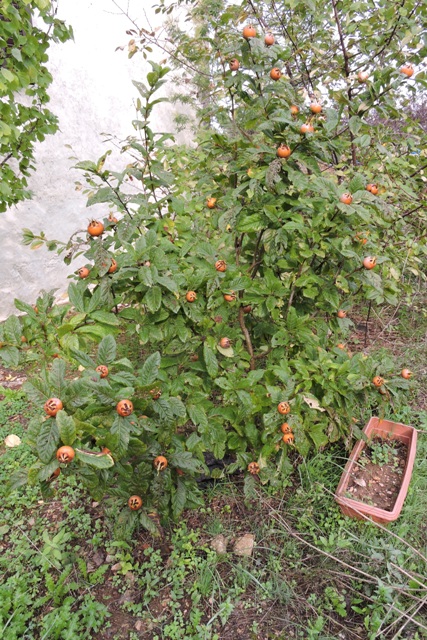
I have a good crop of Medlars this year. My tree is still small and Medlars are a very slow growing species, but it still crops well.
Although the fruits look as though they are ripe, they are actually still as hard as nails. They need some cold nights so that “bletting” will make them edible.
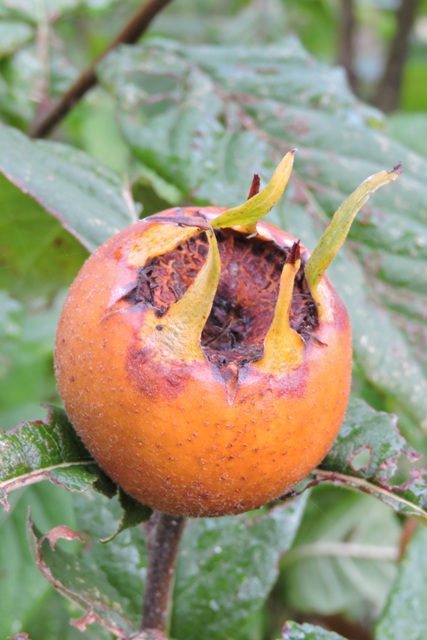
The tree originated in the area of the Middle East which we now call Iran and they were brought to the Mediterranean by the Romans. It was the Romans who, as they did with many plants, then spread them across Europe. The BBC featured the Medlar in a “BBC Future” article, as “the tree the world forgot”.
With bright green leaves in spring, the russet coloured fruits and autumn leaf colour, the tree is often sold as an ornamental. But for something different, it is really well worth growing.
I’ve found an interesting recipe for Medlar Tarts which I want to try with this year’s crop.
Much ado about photographs
OK, I lie, this is actually about negatives and slides rather than photographs, but they don’t sound right with Shakespeare!
Being winter, the days are rapidly shortening and with sunset just before 16:30, it is dark early so I’ve been doing some scanning of images.
Several boxes of photos came out in the van from the UK, along with the furniture.
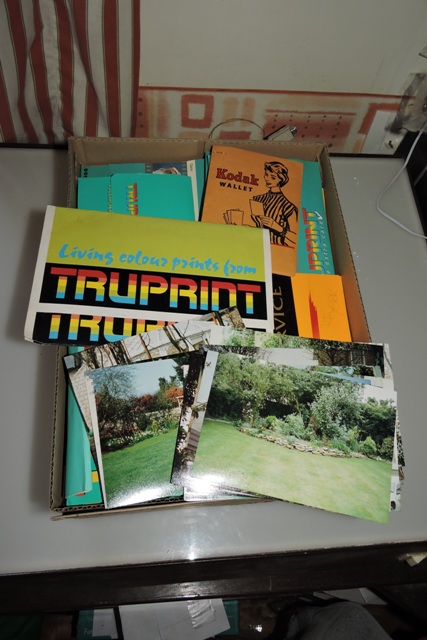
I regard photos just as much to be family heirlooms, as is the Grandfather Clock belonging to my Great, Great Grandfather, Richard Jennison – Founder of Belle View Zoo in Manchester.
True, all the these photos are of family, some in albums, some with a note on the back of who is who. However many folders also include the negatives and there are boxes of colour slides as well as small folders of black and white Medium Format negatives.
I’ve found photos that I have never seen before, like this one of my Great, Great Grandmother, Mary Elizabeth Crossland Bentley on her wedding day, c.1880.
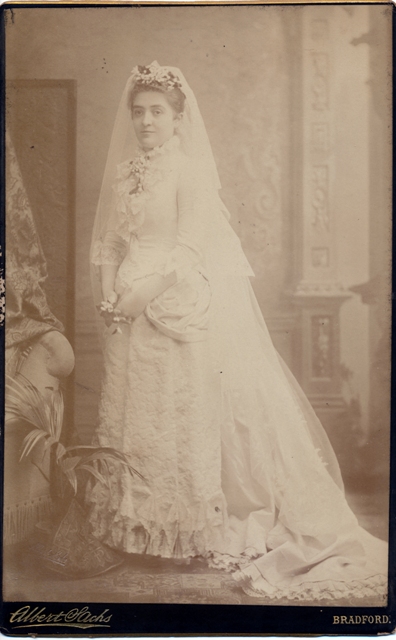
Add to this my collection of perhaps a thousand or more police vehicle and police history images, which also includes many negatives, and I have a lot, an awful lot which need scanning.
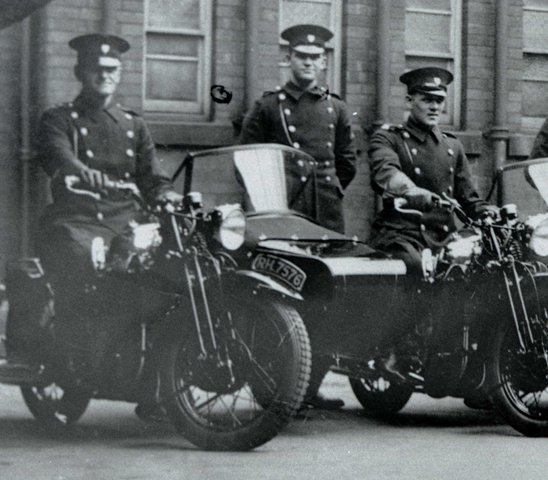
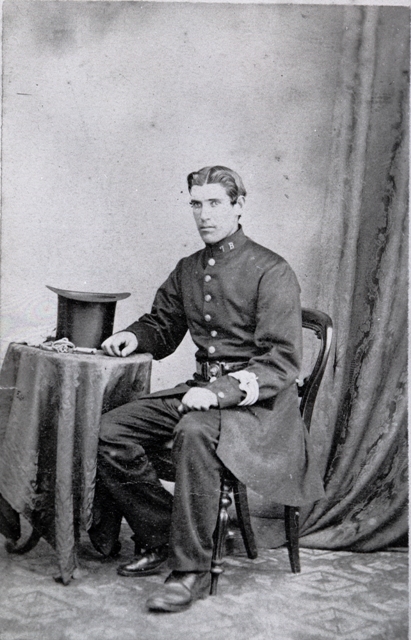
In round numbers, say 300 film strips, each with 36 images makes 10,000 frames to copy.
My flat bed scanner, which will scan at high resolution, takes on average five minutes to scan a slide or single negative frame. However it is strictly a manual operation.
A bit more maths now, so at five minutes per image, scanning continuously it would take 833 hours, or 5 weeks without a break for anything else.
This set me off on a search for an automatic scanner. They are out there of course, the kind which photo labs have. However their prices are an eye watering €6,500 or there abouts.
You could buy a small car for less!
What is not in doubt is the need to digitise all these images to preserve them for the future.
Whether it is a family group photo from six generations ago, or something more recent, only when they have been scanned and backed up will they be secure.
This of course includes vehicle photographs, like the first police car I drove.

A possible solution
I think I have found a solution, made by a German company, but still a little expensive at €1,000. But then what price is time?

As the Black Friday discounts start to appear, I might just treat myself to an early Christmas present if I can find one on offer.
But what I have also started doing from this week, is to add Meta Data into all my digital photographs. This is the digital equivalent of writing on the back of a colour or black and white print.
On a Windows computer it is very easy to add Meta Data using included programmes.
On an Apple MAC you need some software to make it as simple.
Using Windows File Explorer, that little Manilla folder icon, click it and then navigate to the computer folder where you keep your photographs and open the folder.

Go to the tab at the top of the screen, called “Manage“, click on it and then click on “Details Pane”, together with the size of the icon you like to use.
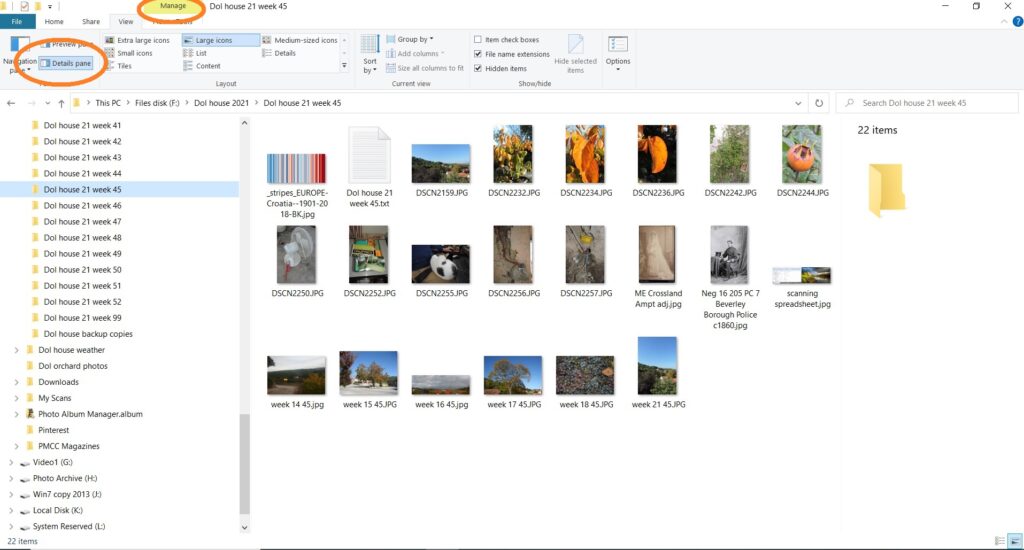
Now click on any image and a box opens on the right of the screen. You can then add a title and copyright notice, the name of the photographer, and details of the who, what, when, where and why, followed by “Save”.

All the information is now encoded into the photograph for others to see later. Here I have selected all this week’s photos and added the same copyright notice to them, in one go.
Comments and titles can be added individually or in groups.
I now just have a little bit of back-record-conversion to do, to add details to all my digital images. And that is before I start thinking about scanning anything!
Everyone has these non tangible heirlooms, but are you protecting them? NCG
Looking back – Week 45
This is the start of the weekly section, with links to past issues of the blog.
2014/45 The first half year

2015/45 A five legged anthropoid doorkeeper
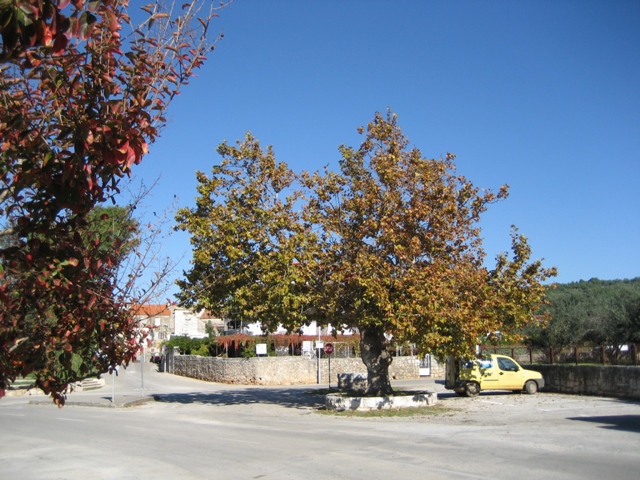
2016/45 Bottoming out

2017/45 Dark skies over Dol
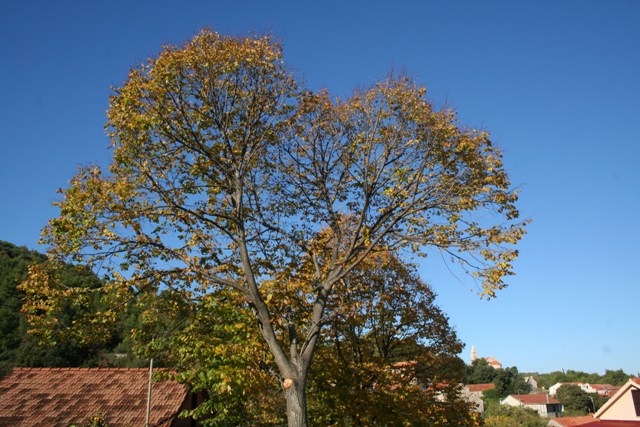
2018/45 Wine
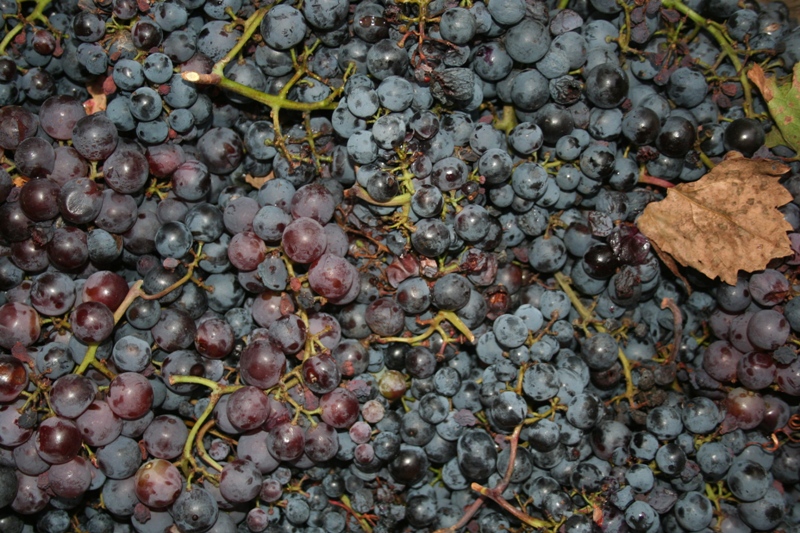
2019/45 Earth, we have a problem

2020/45 Make hay while the sun shines
